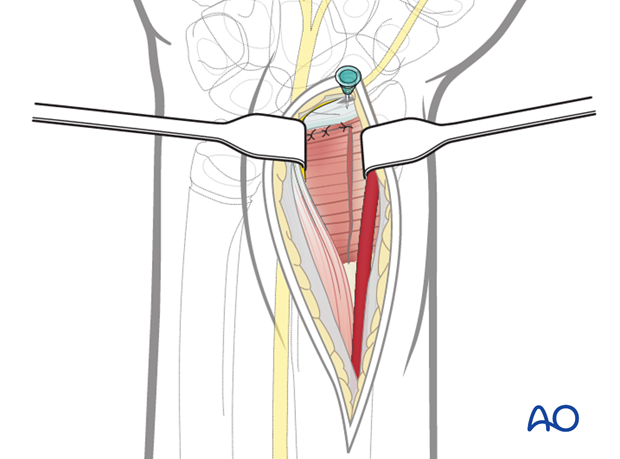Volar (anterior) approach to the pediatric distal radius
1. Modified Henry approach
The modified Henry approach uses the plane between flexor carpi radialis tendon and the radial artery.
The classical Henry approach goes between brachioradialis and the radial artery, ie, radial to the radial artery. The modified approach is ulnar to the radial artery.
The flexor carpi radialis tendon is palpated, before making the skin incision to the radial side.
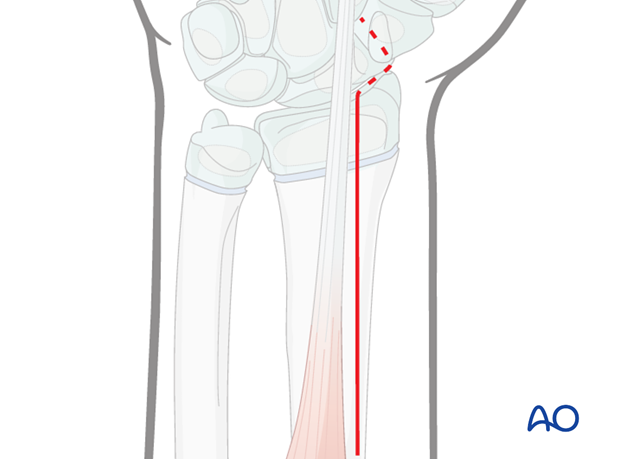
2. Soft tissue anatomy
- Radial artery
- Flexor carpi radialis tendon
- Median nerve
- Motor branch of the median nerve
- Pronator quadratus muscle
- Flexor digitorum profundus tendons
- Flexor digitorum superficialis tendons
- Palmar cutaneous branch of the median nerve
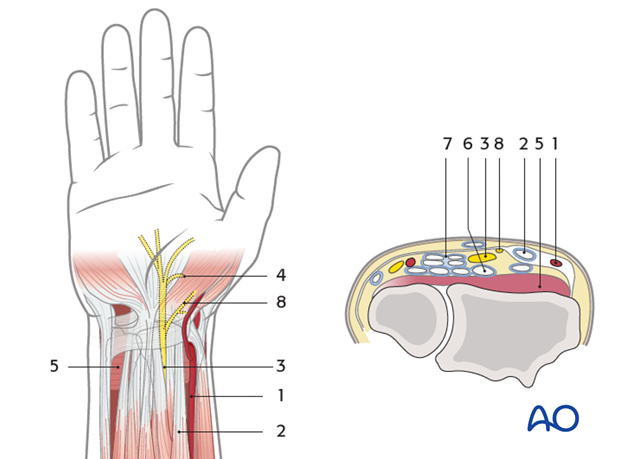
3. Pitfall
The radial artery and the palmar cutaneous branch of the median nerve are vulnerable during this approach.
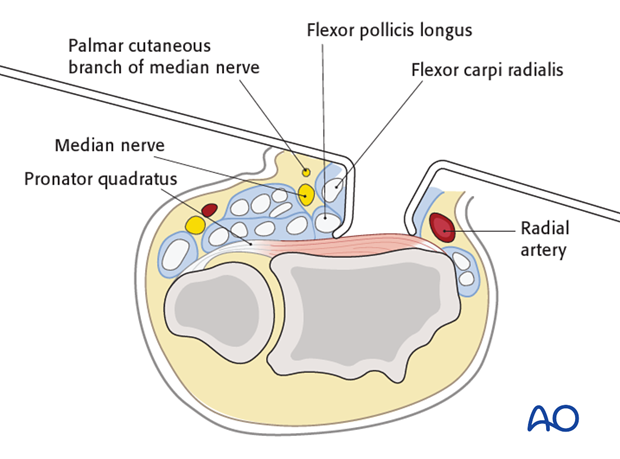
4. Skin incision and exposure
The FCR tendon is palpated, before making the skin incision to its radial side.
The sheath is opened and the tendon retracted medially.
The incision is deepened between the flexor pollicis longus (FPL) and the radial artery.
Care must be taken to avoid damaging the radial artery on the lateral side and the superficial palmar cutaneous branch of the median nerve on the medial side.
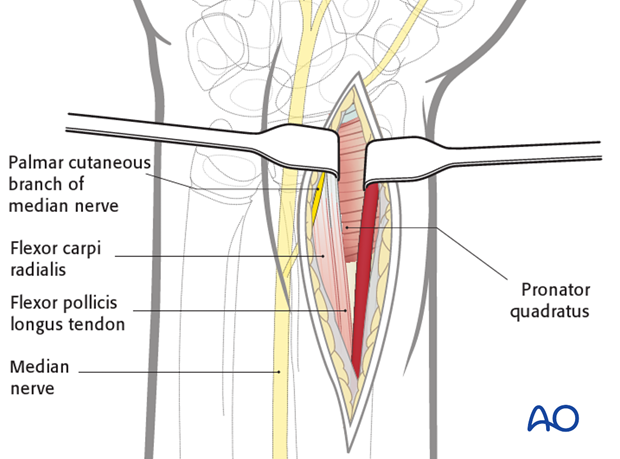
A finger is used to develop the interval between the FPL muscle and the radial artery, exposing the pronator quadratus muscle.
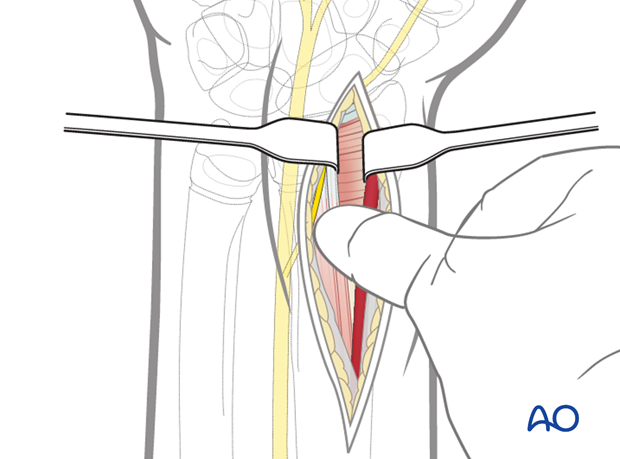
5. Pearl
The pronator quadratus muscle should be elevated using an L-shaped incision.
The horizontal limb is placed at the distal edge of the muscle extending medially. The position of the radiocarpal joint can be determined by the insertion of a hypodermic needle.
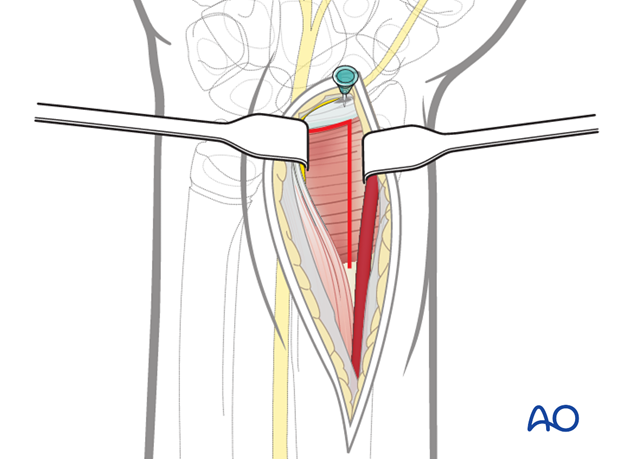
Retraction of the incised edges of the pronator quadratus muscle exposes the distal radius. The muscle is elevated from the distal radius extraperiosteally.
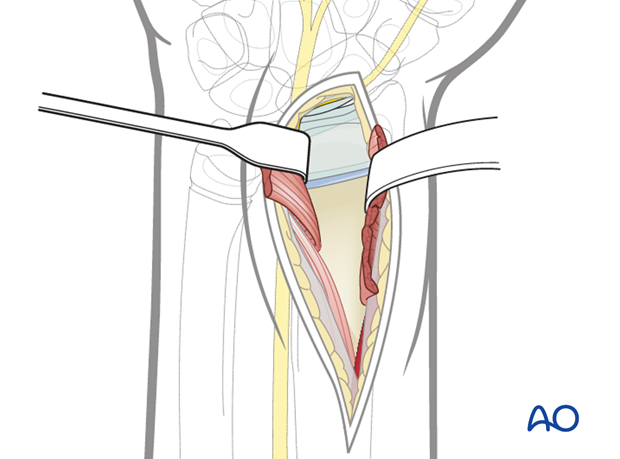
6. Wound Closure
The pronator quadratus should be replaced over any anterior implant(s), and every attempt should be made to reattach its distal edge to the capsule.
If possible, the vertical limb should be reattached to its lateral insertion.
The FCR tendon sheath may be closed, but care must be taken to avoid incorporating the cutaneous branch of the median nerve.
The skin is closed.
